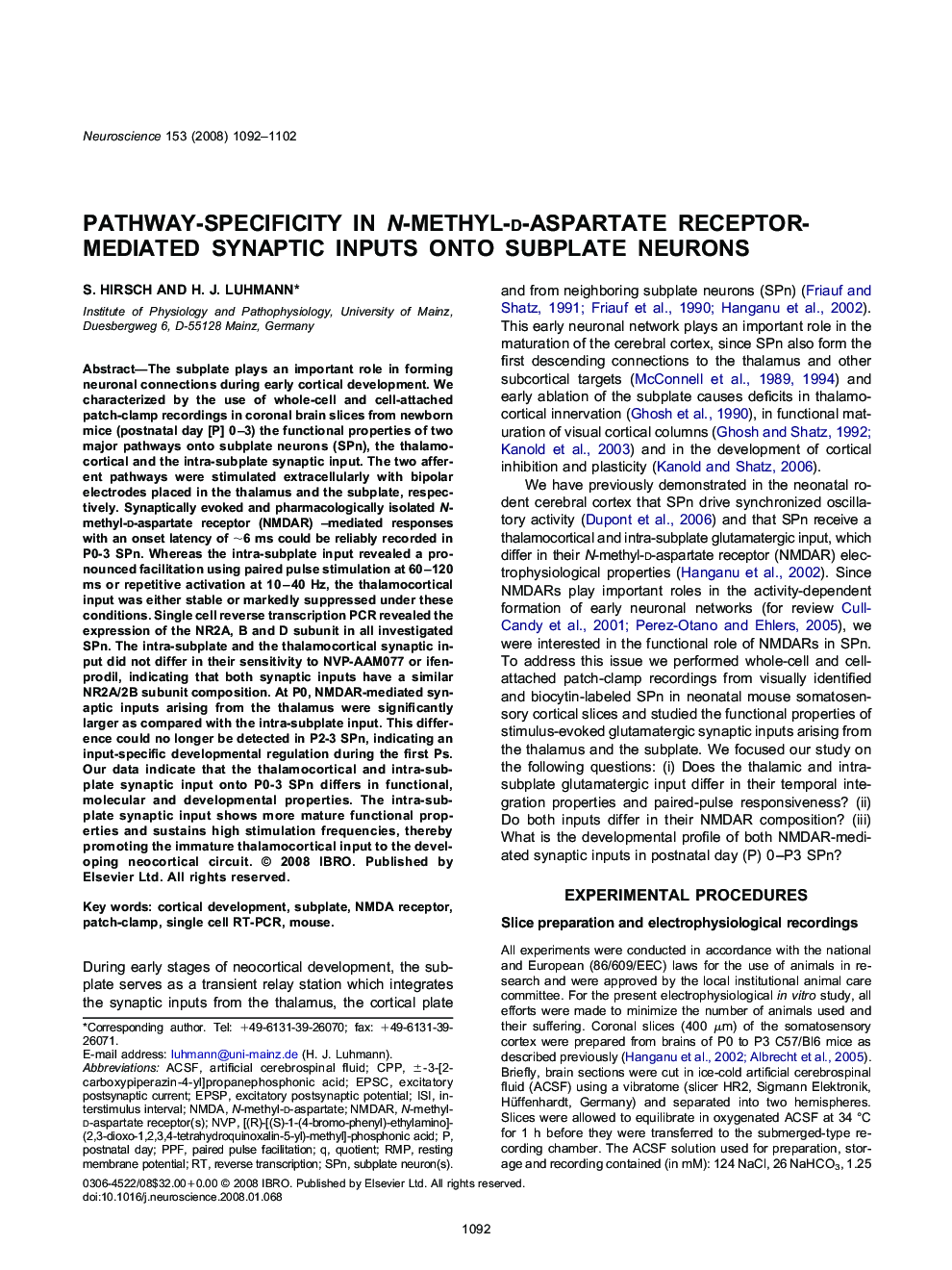| Article ID | Journal | Published Year | Pages | File Type |
|---|---|---|---|---|
| 4341780 | Neuroscience | 2008 | 11 Pages |
The subplate plays an important role in forming neuronal connections during early cortical development. We characterized by the use of whole-cell and cell-attached patch-clamp recordings in coronal brain slices from newborn mice (postnatal day [P] 0–3) the functional properties of two major pathways onto subplate neurons (SPn), the thalamocortical and the intra-subplate synaptic input. The two afferent pathways were stimulated extracellularly with bipolar electrodes placed in the thalamus and the subplate, respectively. Synaptically evoked and pharmacologically isolated N-methyl-d-aspartate receptor (NMDAR) –mediated responses with an onset latency of ∼6 ms could be reliably recorded in P0-3 SPn. Whereas the intra-subplate input revealed a pronounced facilitation using paired pulse stimulation at 60–120 ms or repetitive activation at 10–40 Hz, the thalamocortical input was either stable or markedly suppressed under these conditions. Single cell reverse transcription PCR revealed the expression of the NR2A, B and D subunit in all investigated SPn. The intra-subplate and the thalamocortical synaptic input did not differ in their sensitivity to NVP-AAM077 or ifenprodil, indicating that both synaptic inputs have a similar NR2A/2B subunit composition. At P0, NMDAR-mediated synaptic inputs arising from the thalamus were significantly larger as compared with the intra-subplate input. This difference could no longer be detected in P2-3 SPn, indicating an input-specific developmental regulation during the first Ps. Our data indicate that the thalamocortical and intra-subplate synaptic input onto P0-3 SPn differs in functional, molecular and developmental properties. The intra-subplate synaptic input shows more mature functional properties and sustains high stimulation frequencies, thereby promoting the immature thalamocortical input to the developing neocortical circuit.
